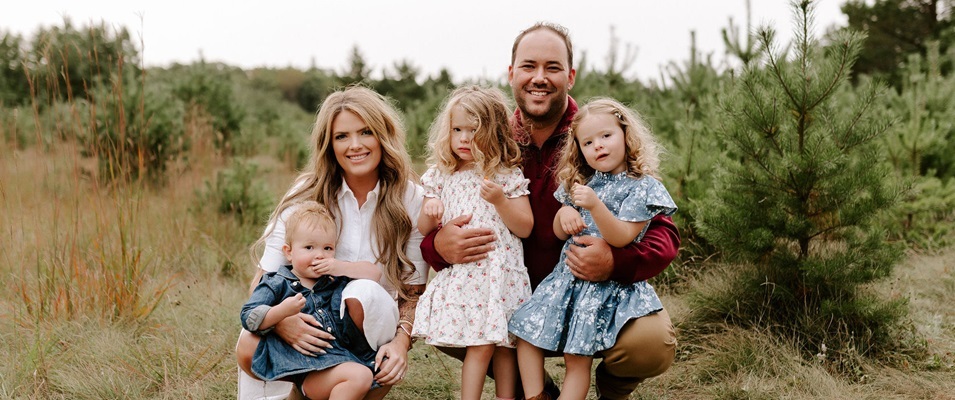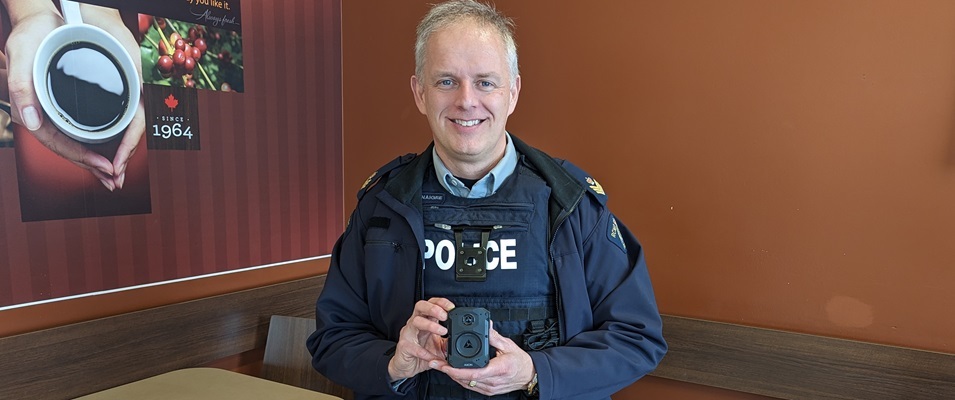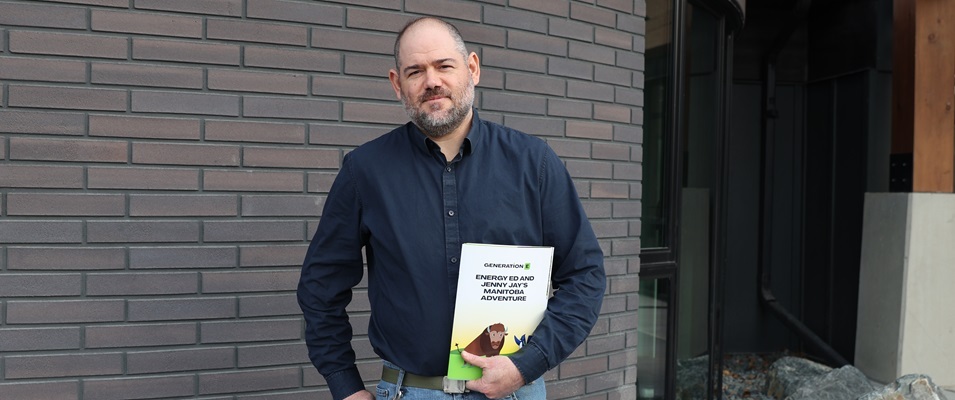
As we barrel towards the end of another year, The Citizen is presenting a series of articles looking back at the year that was, including its ups and down. These are the big stories that have impacted our corner of southeastern Manitoba.
This is the third and final article in the series.
News Media Caught Between Feds and Tech Giants
This year marked the end of an era for online Canadian news delivery, potentially, in a manner that affects readers, journalists and news agencies in unexpected ways. In question is how Canadians will consume news in the future.
In June, the federal government passed Bill C-18, also known as the Online News Act, intended to force the largest media companies, Meta and Google, to share the profits they earn from online advertising.
It’s similar to a move that worked for the Australian government, and now other countries, like the United States, are watching to see how it plays out in Canada.
Canadian Heritage Minister Pablo Rodriguez defended the bill, emphasizing its intent: to ensure an income for players in the Canadian news industry so they can stay afloat in challenging times.
“All these media [outlets]… that play a fundamental role on informing Canadians are gradually disappearing, leaving room for the extremes and also for disinformation,” Rodriguez said. “And I think that it’s bad news for our democracy.”
Over the past decade, advertising revenue that used to drive the news business—whether print media, television, or radio—has rapidly migrated to platforms like Google and Meta, allowing those companies to amass near-monopolies that shut out the competition.
Under this new law, which officially took effect on December 19, Google and Meta are required to negotiate compensation deals with Canadian media companies for the stories that get posted on their platforms.
Meta was quick to respond. Within weeks of the law’s passage, Meta blocked all Canadian news content from being shared on Facebook and Instagram.
To this day, the company stands firm in their resolve and show little intention of negotiating with the Canadian government for an amicable solution.
Google, which is far and away the most prevalent search engine in the world, could have posed an equally terrible threat to Canadian news media. Blocking news content on their forum would have meant that the majority of Canadians would not find any local news reporting when running online searches.
Thankfully for everyone, Google entered into negotiations with the federal government and recently came up with a compromise that will see pay out $100 million every year, indexed to inflation, to qualifying news agencies. Although not quite the deal the feds hoped for, most people are calling it a moderate victory.
Evan Braun, editor of The Citizen, says that Canadians should have grave concerns about online news obstruction.
“In general, the role of a free press is critical to the healthy function of any democracy,” Braun said. “But it goes beyond that. Imagine a situation where a wildfire starts up and the news isn’t able to get to the people who need that information, because people are looking on social media and the official warnings and facts are nowhere to be found there. Or consider weather warnings, or crime reports. Like it or not, social media has come to dominate the distribution of news in Canada and every other country.”
Obviously, there’s a lot at stake for news agencies, too, who are fighting for their lives in an internet-driven world.
This stark reality hits especially close to home for small news companies like The Citizen, which relies heavily on social media platforms to drive readership.
“The problem is that social media has led to an environment where news is largely considered to be ‘free’ nowadays, and it’s not,” says Braun. “It does need to be paid for, especially if it’s going to be high-quality. If social media makes it too difficult to earn a profit as journalists, by eating into advertising revenue streams and subscriptions, then other workarounds must be found. Asking social media conglomerates to pay their share is one such workaround.”
NDP Win Majority Government
On October 3, Manitobans had a big decision to make, courtesy of the province’s forty-third general election. It was a tight and at times scathing campaign. In the end, the NDP pulled ahead over the PCs, winning a majority government.
The Manitoba Liberals were dealt a stinging loss, leaving them with only one seat in the Legislature. On election night, both PC leader Heather Stefanson and Liberal leader Dugald Lamont announced their decisions to step down from leadership.
For the NDP, the win meant regaining the power they lost in 2016 election, after holding office for four consecutive terms.
As a result, Wab Kinew became the province’s inaugural First Nations premier and the only First Nations premier to be elected in any of the provinces to date. Kinew wasted no time in pointing out the significance of his win for First Nations neechies (friends) everywhere.
“I want to speak to the young neechies out there,” Kinew said during his victory speech. “I was given a second chance in life and I would like to think that I’ve made good on that opportunity. And you can do the same.”
This cultural pride was reflected throughout Kinew’s swearing in ceremony on October 18. The event was replete with Indigenous flavour, culture, and regalia from beginning to end and Kinew was honoured with the presentation of the war bonnet, a headdress he donned proudly.
Trouble in Local School Divisions
PBL at NHS. In the first month of 2023, The Citizen ran a story that gained a higher readership and more intense feedback than almost any other since it began publishing local news. The article presented the testimonies of one student and a variety of parents who questioned Niverville High School’s (NHS) project-based learning model for all students in Grades Nine and Ten.
It took the courage of one young former NHS student, Zoé, for the provocative subject to draw widespread public attention.
For students like Zoé, seeking a more traditional model, the only option was to leave their friends and hometown school behind to register at the Steinbach Regional Secondary School (SRSS). For them, PBL just wasn’t working.
PBL is both old and new. Teachers across many divisions have embraced this approach. For kinesthetic, tactile, and visual learners, PBL can add a fun component to traditional learning.
As far as The Citizen was able to glean, though, NHS is the only school in the entire province to completely eliminate traditional learning across two full grades, opting to replace it with a mix of PBL and interdisciplinary learning.
For NHS students in Grades Nine and Ten, lecturing, notetaking, textbooks, fact memorization, tests, and exams are virtually a thing of the past. That is, until they reach Grade Eleven, when traditional learning makes a comeback.
The interdisciplinary component for Grades Nine and Ten students involves combining two or more academic subjects, or disciplines, into one instructional class. At NHS, English Language Arts (ELA), Science, and Social Studies are combined into a single course and all of these subjects are covered through individual or group projects chosen by students.
For Zoé, who had a penchant for ELA and dreamed of becoming a journalist, the focus on grammar, spelling, novel exploration, and storytelling were all but lost. And moving away from a percentage-based grading model to one that reduced marks to basic, good, very good, and excellent meant that Zoé no longer felt she had an adequate measure by which to challenge herself.
Becoming complacent, Zoé said that she saw the same in her classmates. The stronger students, she said, carried the weaker ones in group projects. A lack of discouragement against plagiarism from questionable online sources even had her questioning the merit of her education.
By spring of her Grade Nine year, Zoé moved from a high-achieving student to one who struggled to get out of bed in the morning. Her story resonated with parents to such a degree that by the fall of 2023, NHS began offering options for students who preferred traditional learning.
HSD EAs Go on Strike. After months of attempted negotiations for a fair living wage, HSD’s educational assistants (EAs) took to the picket lines on November 1. According to Geoff Dueck Thiessen, union representative with CLAC Local 306, HSD EAs were making several dollars per hour less than nearby divisions.
The three-week strike ended when a deal was finally reached on November 21 although it wasn’t exactly what the EAs and their union had hoped for. Schools, teachers, and parents of children with disabilities nonetheless sighed a huge relief when EAs resumed their roles within their respective schools.
The strike period was long enough to throw the entire school system into upheaval. Resources were spread thin as students with physical, cognitive, and learning disabilities lost out on much of their in-school support. Other parents were asked to send their kids for a shorter day. Some parents were even asked to keep their kids home altogether.
SRSD Calls for Major Budget Cuts. Around the same time that the HSD EAs began negotiating for higher wages, EAs in the Seine River School Division (SRSD) were calling off their strike threat of strike, ratifying a deal for higher wages.
In Ritchot, the SRSD oversees École St. Adolphe School and École Île-des-Chênes School.
Just months after negotiations were settled, though, the SRSD trustee board and administration discovered that their expected $3.1 million budget surplus was more realistically going to become a $1.3 million deficit. They were facing a total shortfall of $5.3 million.
The board immediately began putting austerity measures in place, which included a freeze on new staff hires and nonessential expenditures. Layoffs and program cuts were also said to be imminent.
This budgeting error didn’t get the public’s full attention, though, until letters went out to parents with students in programs that had been funded by the school division. These included the Kids at Play (KAP) program as well as bussing for students living within .8 and 1.6 kilometres of their schools.
Establishing a fee-for-use model for these initiatives brought out the ire of parents who felt unprepared and misled by the sudden change in policy. Working parents with children in the KAP program would have had no alternative to paying the new $190 fee except to quit their job and stay home.
An outpouring of objection led the board of trustees to revoke their fee-for-use model. Many parents felt a pang of relief. Still, the division is a long way from recovering from the deficit. Its pain will likely be felt across all areas of the division for years to come.
School Cell Phone Suspension Gets Overall Thumbs Up. Meanwhile, a decision made by the Division scolaire Franco-Manitobaine (DSFM) this fall has garnering much support from parents, teachers, and school administrators.
The DSFM oversees the province’s fully Francophone schools, like École Sainte-Agathe and École Régional Gabrielle-Roy. As far as The Citizen is aware, they are also the first division in Manitoba to ban or extremely limit cell phone usage.
“A few years ago, cell phones were used as a pedagogical tool,” says Alain Laberge, division superintendent. “We’ve noticed that nowadays cell phones are used to surf the web, exchange non-school-related text messages, watch TikTok, and even cheat. It is also a distraction, as many students would listen to music—with wireless earbuds—while teachers were teaching.”
As of September, students from Kindergarten to Grade Eight are restricted from bringing a cell phone into the school. In Grades Nine to Twelve, cell phones cannot cross the threshold into the classroom setting.
Laberge says that the vast majority of parents and even students were completely understanding and appreciative of the initiative. So far, few misdemeanours have been noted.
The DSFM will continue to monitor and review the policy on an annual basis to assess its merit.
“In education, [nothing] should ever be a permanent fixture, as this would mean we are static and that we are not open to hear and learn from our environment,” Laberge concluded.




















